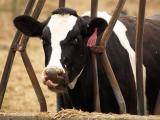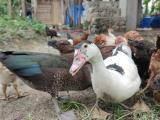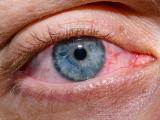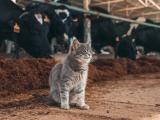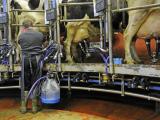Dec 20, 2011 (CIDRAP News) – In an unprecedented move, the US government, following an advisory panel's advice, has asked the journals Science and Nature to omit key details of two studies on the transmissibility of dangerous mutant strains of H5N1 influenza viruses in ferrets on grounds that the information could be misused by bioterrorists.
The National Science Advisory Board for Biosecurity (NSABB), a panel of independent experts, recommended that the research reports be published without methodologic and other details that could allow others to replicate the experiments, the National Institutes of Health (NIH) announced today.
The NIH said the government is working on a mechanism to provide the full study details to scientists who have a legitimate need for them "in order to achieve important public health goals." The two journals responded cautiously to the recommendation today but suggested they may go along with it if a way can be found to provide the details to responsible scientists.
The studies, which have been debated by scientists and policy makers for more than 2 months, deal with the development of H5N1 strains that spread among ferrets by airborne droplets, with no direct contact. The mutant H5N1 strains are reported to be lethal as well as easily transmissible in ferrets, which are considered the best animal model for human influenza.
H5N1 infections in humans are fairly rare, and the virus does not spread easily from person to person, but the fatality rate is about 59%. The fear is that the mutant strains that emerged in experiments by Ron Fouchier of Erasmus University in Rotterdam and Yoshihiro Kawaoka of the University of Wisconsin could spread around the world and kill millions if they got loose.
The NIH said in a statement, "These manuscripts—which describe laboratory experiments that resulted in viruses with enhanced transmissibility in mammals—concluded that the H5N1 virus has greater potential than previously believed to gain a dangerous capacity to be transmitted among mammals, including perhaps humans, and describe some of the genetic changes that appear to correlate with this potential."
After reviewing the manuscripts, the NSABB decided to recommend that the Department of Health and Human Services (HHS) ask the authors and the journal editors to revise them, the NIH said. The panel "recommended that the general conclusions highlighting the novel outcome be published, but that the manuscripts not include the methodological and other details that could enable replication of the experiments by those who would seek to do harm."
The NSABB also recommended that the authors and editors add more information about the goals and potential public health benefits of the research and about the measures taken to protect lab workers and the public, the NIH said.
"HHS agreed with this assessment and provided these non-binding recommendations to the authors and journal editors," the statement said.
Seminal event
NSABB members and others involved in the situation called the recommendation a first.
"It's the first time I'm aware of in the life sciences that this kind of recommendation has been made. It's a seminal event in the life sciences," said Michael T. Osterholm, PhD, MPH, a member of the NSABB and director of the University of Minnesota's Center for Infectious Disease Research and Policy, which publishes CIDRAP News.
In 2005 the NSABB considered whether to recommend against publication of details of how scientists re-created the 1918 pandemic flu virus, but decided not to go that route, as reported previously.
The Fouchier study was submitted to Science. Dr. Bruce Alberts, the journal's editor-in-chief, in a statement today said, "We strongly support the work of the NSABB and the importance of its mission for advancing science to serve society. At the same time, however, Science has concerns about withholding potentially important public-health information from responsible influenza researchers."
"Science editors will be evaluating how best to proceed," Alberts said. "Our response will be heavily dependent upon the further steps taken by the U.S. government to set forth a written, transparent plan to ensure that any information that is omitted from the publication will be provided to all those responsible scientists who request it, as part of their legitimate efforts to improve public health and safety."
Alberts also commented that the mutant H5N1 virus "is sensitive to antivirals and to certain vaccine candidates and knowledge about it could well be essential for speeding the development of new treatments to combat this lethal form of influenza." He offered no details on how the virus's sensitivity to antivirals and vaccines was assessed.
Virologist Albert Osterhaus, a member of the Fouchier team, said the group has "grudgingly agreed" to revise its report, according to a story today from ScienceInsider, the news service of Science. The authors received the NSABB recommendations Dec 1 and sent Science a revised version a week ago, though they disagree with the recommendation, the story said.
Dr. Philip Campbell, editor-in-chief of Nature, which is considering publication of the Kawaoka study, issued a brief statement today. He said the editors are in "active consultation" with the NSABB about the report.
"The research identifies molecular features which may contribute to allowing the H5N1 virus to be more transmissible in humans," Campbell said. "We have noted the unprecedented NSABB recommendations that would restrict public access to data and methods and recognise the motivation behind them. It is essential for public health that the full details of any scientific analysis of flu viruses be available to researchers. We are discussing with interested parties how, within the scenario recommended by NSABB, appropriate access to the scientific methods and data could be enabled."
Terry Devitt, a spokesman for the University of Wisconsin in Madison, Kawaoka's institution, told CIDRAP News today, "The [NSABB] recommendations are being looked at and we'll work with the journal to arrive at a manuscript that we hope will satisfy those recommendations." Kawaoka is also affiliated with the University of Tokyo.
"We feel that there's information that's important to inform the science and that's important to share with people doing flu surveillance in different parts of the world," Devitt added. "The experiment conducted here is going on in nature right now, so this info is essential in terms of identifying mutations that may occur in nature and that would be worrisome."
Devitt said Kawaoka's manuscript had not yet been accepted by Nature and that waiting for the NSABB recommendation was part of the reason for the delay.
NSABB reached consensus
Paul S. Keim, PhD, of Northern Arizona University, chair of the NSABB, said today that the 25-member board engaged in plenty of discussion about the research but reached a consensus that the full details should not be published.
"There was a lot of discussion on what details were acceptable and what weren't," he told CIDRAP News. "In the end, everybody agreed that the methodological details and results that would allow someone to replicate the research had to be omitted. There was a consensus that . . . the major conclusion that H5N1 could be transmissible in mammals had to go forward."
He said the panel sought to minimize the risks and maximize the benefits of publishing the findings. "One benefit is that the world would realize the H5N1 virus is very dangerous and it could adapt [to become more transmissible]. There were mixed feelings. Some felt that in 15 years it hasn't happened and it never will happen. I think these researchers have shown it could. This could lead to better vaccines and better therapeutic drugs."
A number of scientists have argued in media coverage that details of the two studies will inevitably leak out and that trying to keep them locked up is futile. Keim agreed that the information will eventually get out, but he described the NSABB approach as a way to buy some time and spark a much broader discussion of how to handle potentially dangerous, or "dual use," research.
"The details of the nuclear bombs got out, so to say these details won't get out is unrealistic," he said. "The hope is that we can get vaccine and drug development moving along quickly so that the defensive aspects of what's needed here get a head start."
"This is not censorship, this is a request to postpone [publication] so there can be a broader discussion," he said. He added that the issue of how to deal with dual use research concerns much more than the two H5N1 studies. "It's just that this is the tipping point, so to speak, for that larger issue."
Osterholm suggested that potentially dangerous experiments may need to be reviewed in the proposal stage rather than after they are conducted. And such research "should not be evaluated only at a single national board," he said. "How do we incorporate this type of research into an institutional and research-funding organizational structure? That's going to be really important."
"This is an issue that really needs to be considered at the international level by many parties," he added. "This is the global life science community. We need to do this with the input of that entire community."
Osterholm also commented that lab safety and security will need to be part of the discussions. The Fouchier and Kawaoka studies reportedly were conducted in biosafety level 3 (BSL-3) labs, which is one step below BSL-4, the maximum precautions.
Given that these results were not necessarily anticipated, its understandable why it was initiated at the level it was [BSL-3]," he said. "But now that we have them, I think we need to look at them in terms of what they mean for biosafety."
"Influenza is virtually in a class by itself," he added. "Many other agents worked on within BSL-4 labs don't have that transmissibility that we see with influenza. There are many agents worked on in BSL-4 that we wouldn't want to escape. But I can't think of any that have the potential to be transmitted around the world as with influenza."
Although the mutant viruses reported in the studies have been described as extremely dangerous, Keim said no one knows just how dangerous they are.
"It's not clear that these particular [experiments] have created something that would destroy the world; maybe it'll be the next set of experiments s that will be critical," he said. And that’s what the world discussion needs to be about. A lot of that we just don't know yet from these papers.
"One way to characterize that is we don't know exactly how dangerous these results are, but we know they're going in a direction that's very dangerous, and that's why these recommendations came down."
See also:
Dec 20 NIH announcement about NSABB recommendation
Dec 20 Science statement
Dec 20 ScienceInsider story
Nov 17 CIDRAP News story "H5N1 transmission experiment stirs concern"



